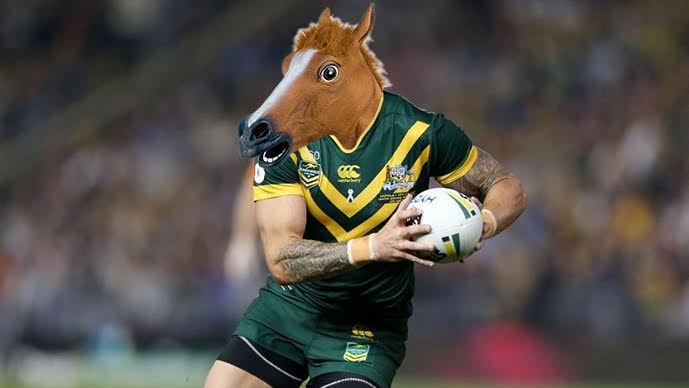Workhorse Watch: Rep Round
The Australia vs New Zealand Test turned out to be a bit of a fizzle (I refuse to call it the ANZAC Test considering Anzac Day occurred a week and half prior to it) but I enjoyed it nonetheless. It wasn’t a high quality game but the Newcastle fans were there in good numbers at Hunter Stadium and I enjoyed my time at the game.
If only the same could be said about the catering. Say what you like about ANZ Stadium but what it lacks in atmosphere, it makes up for in time saved lining up for an overpriced mid-strength beer.
We got there fairly early so the wait for the first beer at a bar right near the entrance wasn’t too bad. By the second round it was quicker to walk back to the bar at the entrance than to wait at the bar behind our section of seating. By the third round, despite being 50 metres apart, the lines at both bars were so long they eventually met up with each other leaving some poor bloke at the end of both queues!
STATS PER MINUTE
Champion Data’s crackdown on what constitutes a run or a tackle has caused plenty of debate this season. It was really interesting to listen to Christian Eshman from Champion Data talk to the Moneyball Podcast about their method of tracking stats.
With a break in the NRL competition thanks to the representative round, the Workhorse Watch can reveal the 5 Biggest Stats Per Minute Let Downs of 2016.
There is an argument to say the Raiders back rower is actually the most disappointing in our top 5. Papalii’s minutes have increased on last season as he’s gone from averaging 73.1 minutes per game to playing the full 80 minutes every week this season. His tackle count has dived from 27 per game to 22 which, along with two less runs per match has resulted in a drop from 0.51 SPM to 0.43 SPM.
This time last year Lewis had three workhorse tries to his name which isn’t exactly a lot but it’s a hell of a lot better than the duck egg he sits on at the moment. The former Panther’s minutes have dropped slightly from 65 minutes to 62 this year but his involvements have seen a far sharper decline. Like Papalii, Lewis has gone from averaging 27 tackles in 2015 down to 22 this year and he also is making two less runs per game.
The Australian front rower has been a consistent workhorse for many seasons but the numbers just aren’t there this year. This time last year Scott had seven workhorse tries and this year, he has just one. A large part of that comes down to his minutes. Last year Scott averaged 53.6 minutes per game, this year he’s averaging 47.5. It’s smart management by Cowboys coach Paul Green who continues to get the same amount of go forward from his captain however seven less tackles a game puts a real dent in Scott’s workhorse tally.
10 workhorse tries in the first nine rounds last year compared to just three this year is the biggest fall of any player. McCullough is averaging just 0.64 SPM compared to 0.73 last year but as bad as that is, his drop in minutes is the real reason for his dramatic decline. The Broncos rake was averaging 70 minutes a game last season but in 2016 is seeing just 55 minutes of game time. There are plenty of forwards seeing less minutes this year but most have increased their work rate as a counterbalance, but not McCullough. Less minutes and a lower work rate means he’s gone from registering 46 tackles per game to just 31.
Glenn has suffered the biggest drop in stats per minute of any major workhorse, going from 0.54 SPM in 2015 down to 0.44 this season. Glenn is playing the same amount of minutes (72) as last year and has played the same number of games (8) as last year and yet he has just one workhorse try for the season. Other players in the top five might have seen bigger drops in total workhorse tries from this year compared to last year, but where they can blame that largely on their minutes, the Kiwi back rower has no such excuse.
Geoff Adams
Latest posts by Geoff Adams (see all)
- 2018 Workhorse Watch Awards - September 3, 2018
- Workhorse Watch – Round 24 - August 29, 2018
- Workhorse Watch – Round 23 - August 22, 2018







